
Bathroom Privacy Guide – Windows, Ideas & More in 2025
In home design, bathroom privacy often gets overlooked in favor of more glamorous elements like tile choices or statement tubs.
For the master or guest bathrooms, 75-100 watts is recommended. For small or medium-sized bathrooms like half-baths and powder rooms, 45-60 watts are acceptable. Higher wattage provides more brightness and light intensity which can be blinding for smaller spaces, making 45-60 watts ideal for the average bathroom.
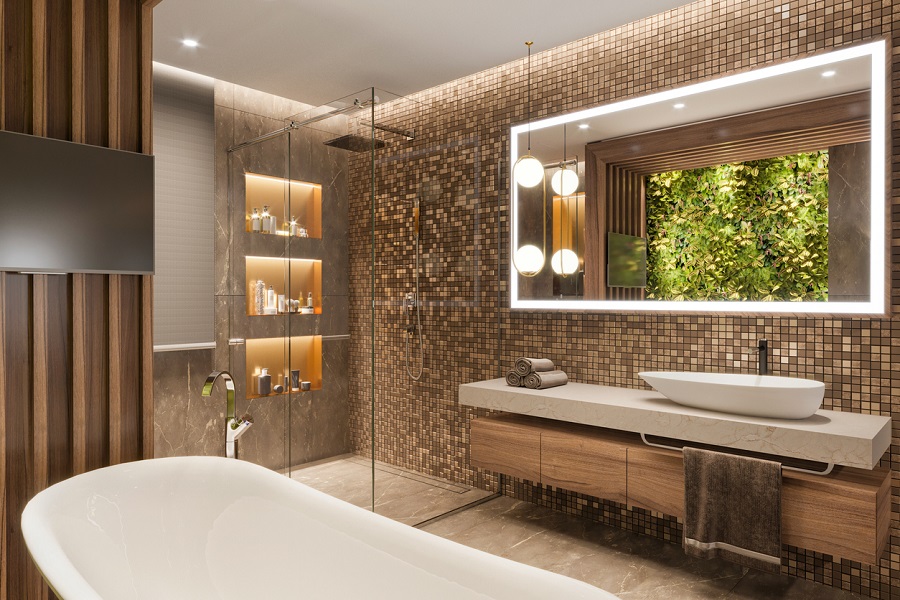
When it comes to your bathroom’s light bulbs, there are a few things to look at:
The wattage of your lightbulb will determine its power output and general brightness. The higher the wattage, the more intense and bright the light. Light intensity is also a factor, as intense light can irritate the eyes and affect your sleep cycle.
The bulb of the light source will significantly impact how it illuminates an area. Additionally, certain shapes are designed for specific fixtures, so you must understand which shape to choose. The common bulb shapes are:
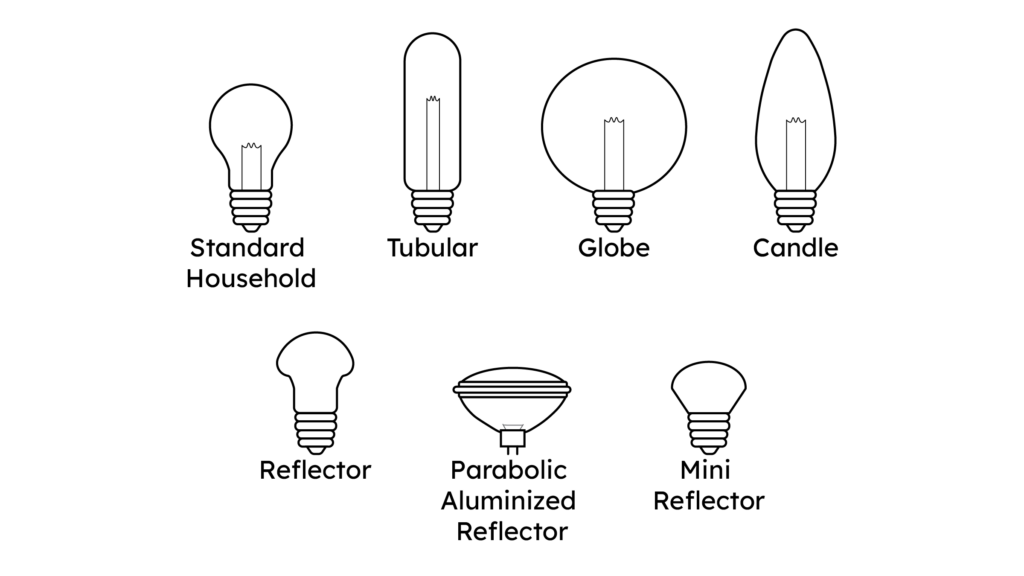
The bulb type determines how the bulb displays light. This affects the longevity of the bulb and how hot the bulb is.
There are four main light types to choose from, and each offers its own benefits:
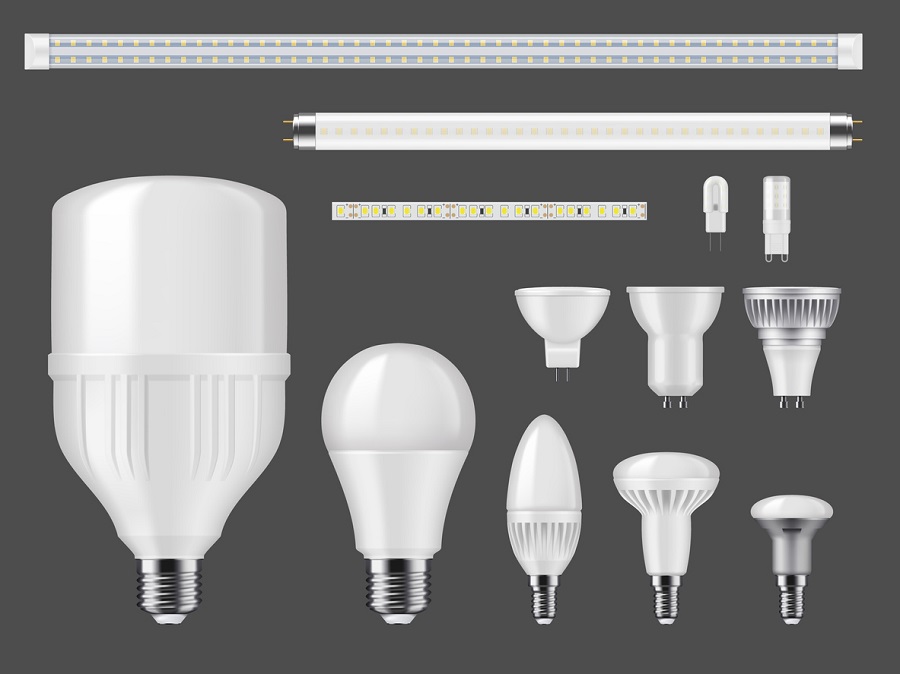
Task lights provide increased lighting to a given area, making them great for seeing low-contrast and smaller objects. They are ideal for a workstation, a kitchen, or a reading area is they help provide a large area of illumination to a small area. Table lamps and directional fixtures are all examples of task lights.
Pros:
Cons:
Also referred to as general lighting, ambient lights provide overall illumination for a room, creating a consistent light level. These lights are ideal for an ample common space as it helps to establish a general light level. Floor lamps and ceiling-mounted lights are examples of ambient lighting.
Pros:
Energy efficient
Cons:
Accent lights are designed to highlight a focal point or specific feature. These are very common with mirrors, art, or fixtures. Accent lighting has high brightness and a narrow beam angle, so only the specific feature is highlighted. Wall-mounted fixtures and track lighting are examples of accent lights
Pros:
Cons:
Decorative lights refer to lighting fixtures that are meant to be decorative, like jewelry for your bathroom. They prioritize aesthetics over illumination to create a grand spectacle for your bathroom. Decorative lighting utilizes abstract shapes, patterns, and designs to create something unique for your bathroom. Chandeliers and sconces are typical examples of decorative lighting.
Pros:
Cons:
When selecting lights for your bathroom, there are a few considerations to keep in mind. Here are some common lighting mistakes and why you should avoid them:
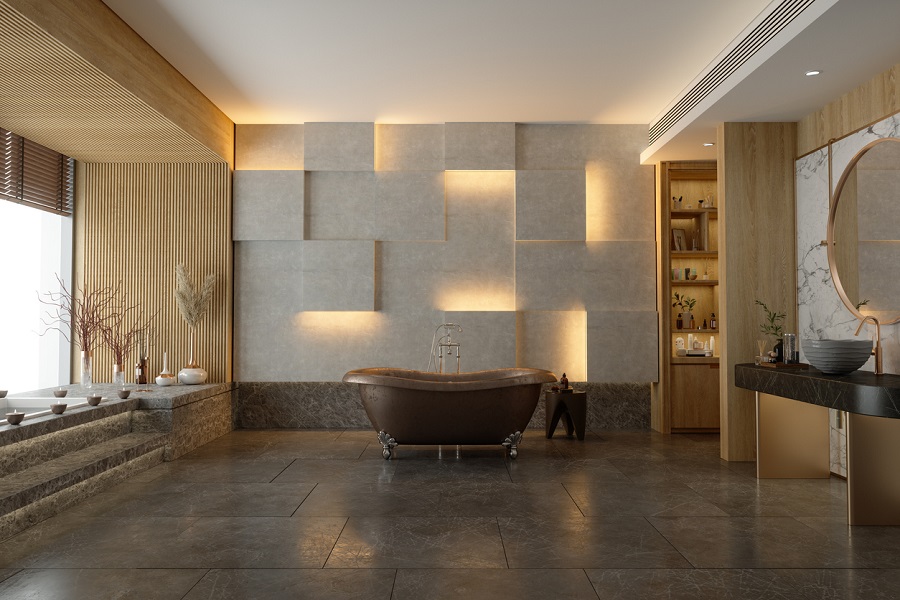
Dimmer switches help you control your fixtures and the light they output. This is invaluable for early morning or light night usage of your bathroom. In addition to creating a better ambience, a dimmer will save you energy.
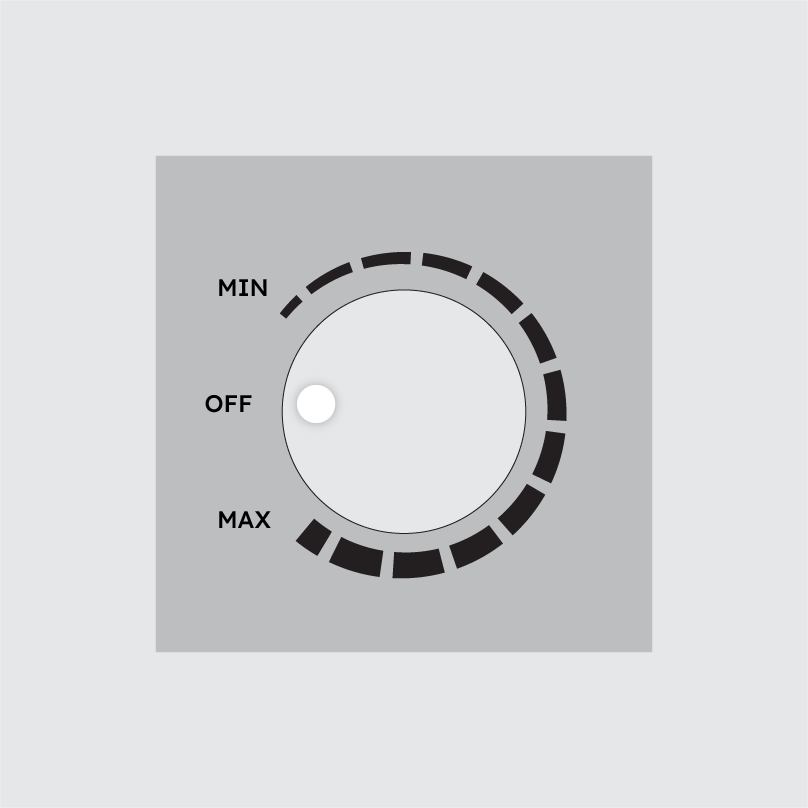
CRI refers to the color rendering index which is used to describe the color of white light that a fixture produces. The lower the temperature of the light, the warmer the color appears. Conversely, the higher the temperature, the colder the light appears. For your bathroom, its important that you choose a natural light range, somewhere around 2700k-3000k. The larger the space, the higher you want the CRI to be, and vice-versa. Although it may seem complicated, understanding the CRI will impact which lights you should choose for your space.
Insufficient lighting can make your bathroom seem sparse and make small tasks difficult. The answer to this problem is simple: layer your lighting to get the most out of your bathroom. You want to strike a balance between task lighting, ambient lighting, and accent lighting. For example, task lighting is great for your mirror/vanity, whereas accent lighting is great around your fixtures such as your modern sink, bathtub or even the door.
On the flip side, including too much lighting can make your bathroom appear cluttered and visually unappealing. Contrasting and conflicting lighting sources will make it difficult to perform simple tasks and ruin your bathroom’s ambiance. This problem can be fixed by creating a lighting plan and mapping out your lighting sources before they are installed.
There are a wide variety of light bulb manufacturers to choose from. Here are some of the most popular brands:
The best lightbulbs for your vanity eliminate glare and shadow, providing an unobstructed view for you to apply makeup and get ready. When choosing to light for your vanity, you want to prioritize removing glare and lowering light intensity as it may clash with your mirror. For this reason, LED lighting is best as it provides directional lighting, which provides better illumination.
The primary difference between these two types is how they emit light. Incandescents provide light by heating a wire filament to generate light. LED lights use an electrical current through a semiconducting material to emit light, similar to how a battery operates. Because the process doesn’t require a specific temperature, LED lights are much safer and last much longer than incandescent bulbs. However, the tradeoff is that they are much more expensive up front than incandescent bulbs.

Eric is the founder and president of Badeloft USA. He has been the president of Badeloft’s US division for over ten years and oversees all marketing and branding aspects of Badeloftusa.com.
His expertise lies in small business development, sales, and home and bathroom industry trends and information.
Contact us with any business related inquiries.
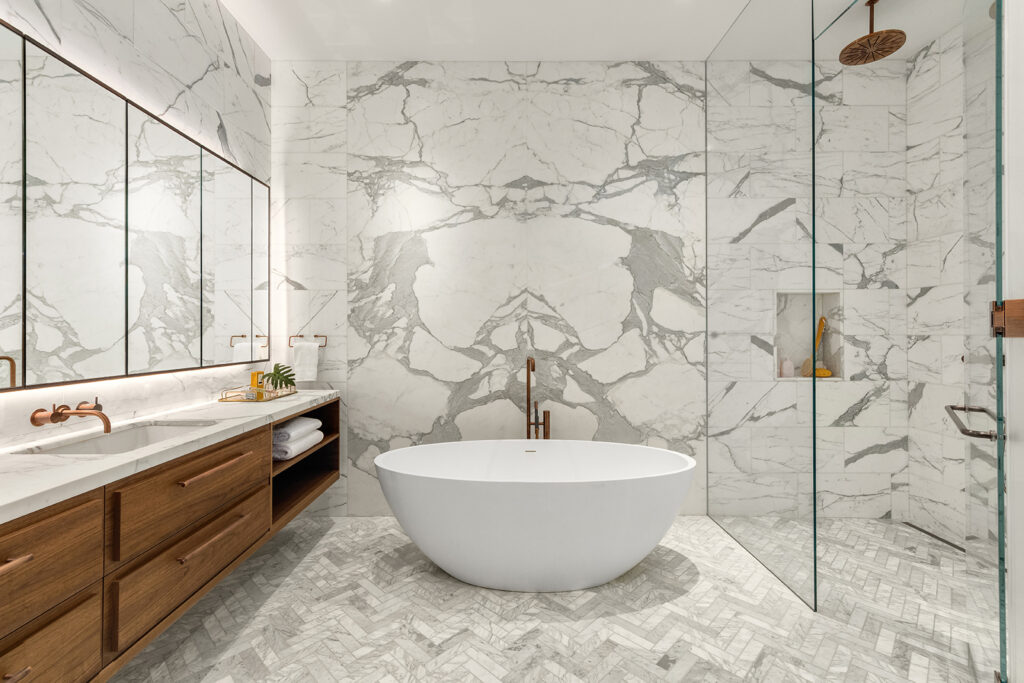
Free material samples and tub templates

In home design, bathroom privacy often gets overlooked in favor of more glamorous elements like tile choices or statement tubs.

A well-designed bathroom is more than just a functional space—it’s a sanctuary. In today’s fast-paced world, luxury bathroom remodels have

A recent study by Badeloft USA identified the most underrated cities for real estate investments in the US by analyzing safety, affordability,

Toilets may seem like a one-size-fits-all fixture, but they come in various sizes and configurations to suit different spaces and
Fill out the form below to request a free material sample
"*" indicates required fields
"*" indicates required fields
"*" indicates required fields